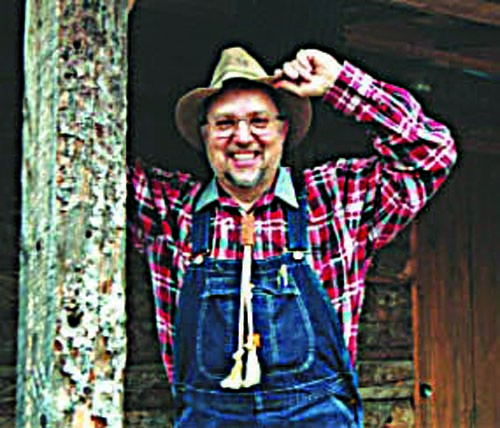Well, kind readers, this old geezer of an aggie column writer has finally reached a significant milestone — at least on a personal basis. This column finishes 50 years of weekly “bull stuff” from me — ranging from mostly humorous (hopefully) to occasionally serious.
I’m gonna say I’ve reached the GOLD STANDARD because gold is the commonly acknowledged symbol for commemorating any 50-year anniversary. I won’t claim my column is the gold standard in quality, because that’s a measurement only you readers can decide. But, I will claim that it’s gold standard for pure numbers and for persistence. Not many writing folks can make that claim.
Before moving on and taking any credit that’s due to column longevity, I acknowledge that I didn’t even originate my pen name or the title for my original column. The inventive mind of my old biz partner and life-long friend, Elpee Peavine, conjured up the name “Milo Yield” and the column’s FARM TALK title, “Viewing the Field.”
I can’t truthfully say it’s been a totally “fun” journalistic ride for more than 2,500 weeks. However, I have managed to stick to the deadline through thick and thin, regardless of numerous career moves, physical moves, health issues, equipment or technology failures.
But, writing this column for five decades of weeks hasn’t been drudgery either. It’s also been a lot of fun. I believe that my effort has brought chuckles to lots of folks most weeks. And, I’ve personally met hundreds of readers down through the years.
I also hope that my occasional plunge into serious matters about agriculture, economics, and politics might have educated a bit, too. I might have even offended a few folks with my comments or opinions. If so, for that I apologize.
So, I guess that elevates “SATISFYING” to my best personal measurement for reaching 50 years of column writing.
***
A 50th anniversary of anything offers a time for reflection. So, now I’m going to switch into a reflective mode. Back when my first column published in FARM TALK on February 5, 1974, it wuz written on an electric typewriter. Then it had to be retyped on a complicated contraption half as big as a refrigerator called a Compugraphic Junior to get it on a strip of paper into could be pasted into a page for offset printing. The commercial printing company for that first copy of my column wuz the Kansas Offset Printing Company (KOPCO) in Caney, Kan.
Several upgrades in Compugraphic typesetters followed the Junior. That took the column up to the 1980s as publishing reached the era of the first Apple 3E desktop computer. That was a generational change in preparation of copy for printing — both in ease and expense. The first Apple computers quickly morphed into vast improvements in digital publishing, and eventually into the internet. Now, today, I type my columns on a fancy Apple desktop computer, then e-mail it to all the papers that publish it. The publications then put the finished product into digital pages, and electronically transmit them to the commercial printer.
Now, today, you can read my column the old way on paper, or electronically if you choose. In short, I’ve witnessed and participated in a monumental 50-year evolution in publishing reading materials.
***
Now I’m gonna reflect on the changes I’ve lived through in agriculture during the past 50 years. Back in 1974, most counties had several hundred full-time and part-time commercial farmers and ranchers. Most farms were still diversified with various mixes of livestock and crops. Counties had dozens of viable agricultural biznesses, including a full spectrum of all tractor and equipment dealerships.
In 1973, commodity prices were at 80 percent of parity prices, thanks largely to the “Great Russian Grain Steal” that caught both the federal government and the grain trade flatfooted. Those parity commodity prices greatly enabled FARM TALK to gain an economic foothold to get it started. Those were the days when dealership lots were largely empty because farmers/ranchers with money and credit had bought them out. Aggies welcomed a new farm newspaper that enabled them to shop regionally, not just locally.
Sadly, the parity price index has been on a 50-year slide since 1973. That slide precipitated the half-century hollowing out of rural America. And, the saddest fact of all is that the federal government, the U.S. Department of Agriculture, and the land-grant university system has claimed all along that it’s all been a great success in modernization, production efficiency, wise resource use, and feeding the nation and the world cheaply.
From what I’ve witnessed, that official claim is the ultimate “Gold Standard of Bull Stuff.” Anyone with eyes should see that our national farm policy has not been a ballyhooed success, but an observable national failure.
To wit: Because of economic pressure, the rural population has been decimated. Rural communities are crumbling into obscurity. Schools have consolidated. Agribusinesses have merged. University Extension Districts have consolidated. Commodity production has corporatized. Commodity processing and international trading is dominated by a few conglomerates. Our natural resources are unnaturally stressed.
The several hundred commercial farms and ranches in each county have shriveled to a scant dozen. Now, I don’t blame those enterprises for getting big. They had to to survive and for that I commend them. And, I acknowledge, all through the past 50-years Americans have been well-fed. That is commendable. But, it’s not been done cheaply, because no one has added up the social and economic “hidden costs” of our cheap food policy. I contend those hidden costs run into untold billions of dollars that are added to the nation’s food bill, even though not acknowledged by officialdom.
***
Starting my next 50 years of column writing next week, I’ll try to get back on track with more rural humor and less pontificating. Until then, my words of wisdom for this week are original. They are: “Every consumer is an intuitive economist.”
Pay attention and have a good ‘un.





